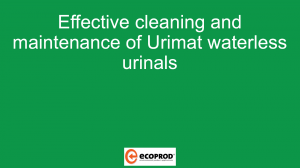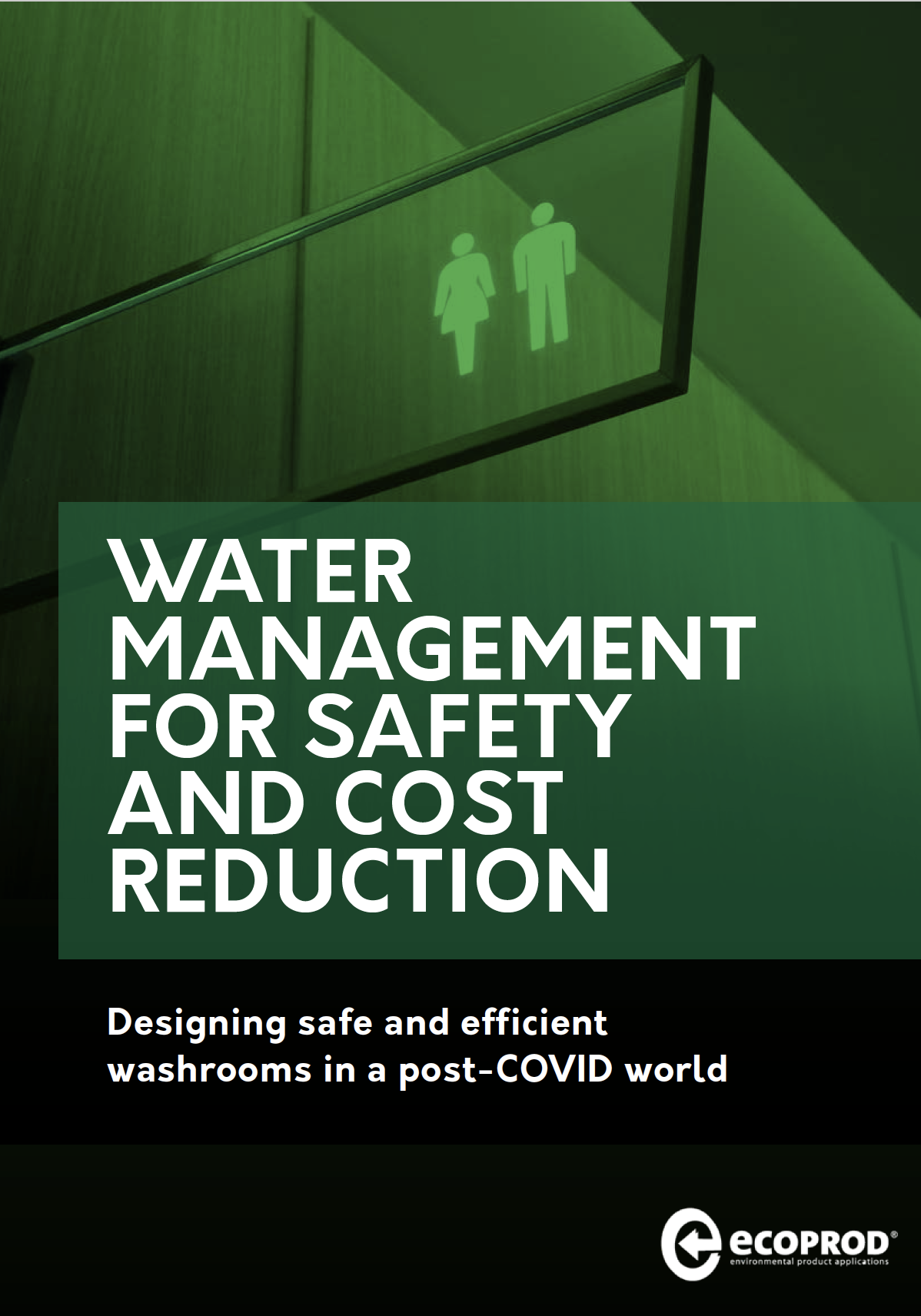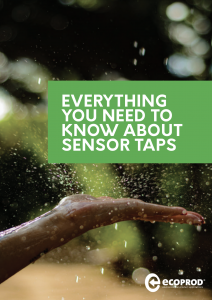At Ecoprod we offer a range of different kinds of sensor taps so there’s something that is suitable for every kind of washroom environment. Many of our sensor tap clients are doctors, dentists and vets – people for whom hand hygiene is an absolute essential in their daily work. The same is true in hotels, restaurants and other hospitality and catering environments, where sensor taps offer clear advantages over manual and press taps. However, sensor taps offer several other advantages beyond the obvious improvement in hygiene and in this blog post I’ll discuss some of these.
Sensor taps offer significant water savings
At Ecoprod our main aim has always been to offer products that help our clients to conserve water (indeed, we’ve written before about the importance of water saving for all of us). Sensor taps generally include an aerator in the spout which disperses the water and means that much less is needed for washing than is the case with traditional taps.
This means that sensor taps generally have a much lower flow rate than traditional hand-operated basin taps. Traditional taps can use up to 10-15 litres of water per minute. In comparison, our Conti+ taps offer flow rates of as little as 2 litres per minute, up to 70% less than traditional taps and our miscea taps use around 60% less water than traditional taps.
Sensor taps are more energy-efficient
We sometimes speak to customers who are concerned that switching to sensor taps might increase their energy usage, given that sensor taps need electricity in order to work. However, there are many more factors to consider when determining the energy efficiency of taps. Whilst traditional hand-operated taps don’t require any electricity for their operation, they are extremely inefficient in other ways.
Choosing the user’s preferred flow and temperature every time a traditional tap is turned on wastes a great deal of energy. In contrast, sensor taps enable you to keep water at a constant temperature so you don’t need to expend energy changing the water temperature. For this reason, taken as a whole, they tend to be much more energy efficient than traditional hand operated taps.
Sensor taps are cleaner and more efficient
Another difference between sensor taps and traditional taps is that the flow rate of sensor taps is predetermined whereas for traditional taps the user has to select their preferred flow rate every time. This is very inefficient, given that 99% of the time users will want the same flow. Pre-setting the flow rate also prevents user from selecting a flow rate that’s too powerful, which helps to reduce splashing and means that the bathroom stays cleaner.
Sensor taps are much more hygienic
As already discussed, hygiene is one of the key benefits of sensor taps. The user is not required to actually touch the tap with their hands at any point during the hand-washing operation. This means that there can be no cross contamination between users. Additionally, products such as those in our miscea range take this further by enabling hands-free dispensing of soap and other cleaning liquids as part of a single hand-washing operation.
Customers increasingly expect to see sensor taps in public washrooms
As hands-free taps are installed in an ever-wider range of locations, customers increasingly expect them to be provided as part of a high quality washroom environment. If you’re installing hands-free taps in your premises for the first time it’s always worth including some clear signage to ensure that visitors know how to use them. Overall however we find that modern hands-free taps are very intuitive to use and completely remove many of the user-error problems that can occur with traditional manually operated taps, such as people leaving the taps running, scalding themselves with water that’s too hot, or splashing water over the washroom.
Find out more
As I mentioned at the start, Ecoprod offers a wide range of different kinds of sensor taps, so there’s something suitable for all environments. If this is of interest to you don’t hesitate to drop us an email or give us a call to discuss what might work best in your environment and arrange a trial installation.













 For the last 8 years Robert Summer – Head of International Sales and Marketing – has developed structured distribution network worldwide for CONTI+ brand. The products offer great benefit for washrooms and shower rooms for public, semi-public and health sector. Today, sustainability, hygiene and smartness are key to CONTI+ solutions. Robert lives the brand and its USPs and loves to support and motivate his team on a daily basis.
For the last 8 years Robert Summer – Head of International Sales and Marketing – has developed structured distribution network worldwide for CONTI+ brand. The products offer great benefit for washrooms and shower rooms for public, semi-public and health sector. Today, sustainability, hygiene and smartness are key to CONTI+ solutions. Robert lives the brand and its USPs and loves to support and motivate his team on a daily basis.











Comments are closed.